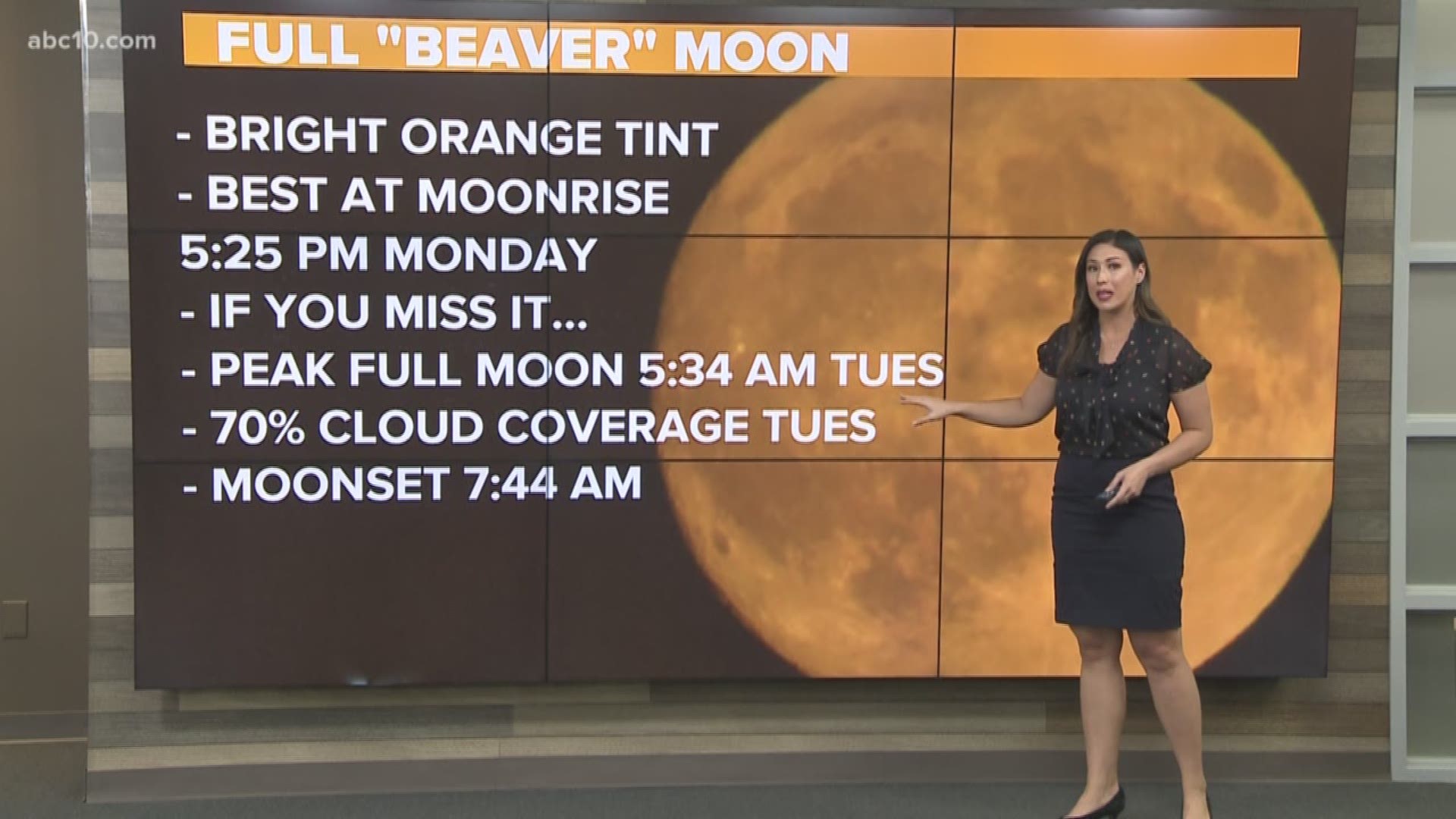SACRAMENTO, Calif. — The planet closest to the sun put on a rare show for astrological observers Monday morning.
Mercury made its transit across the sun, which means it was seen traveling across the sun in view of most of the world, early Monday morning. But the small speck, in comparison to the sun, was not visible to anyone without a telescope and proper eye filter. Mercury's next transit isn't until 2032, and North America won't get another viewing opportunity until 2049.
But if you missed that, then there's something else for you to look up to. Check out the moon this week!
The moon has been increasing in size over the last few days, and starting on Monday, you’ll be able to see the full effect of the ‘Beaver Moon.’
At the horizon, as the moon begins its ascent into the night sky, it will appear with an orange tint. This is also true as the moon sets in the morning. This is due to the way light is scattered around the horizon. You may have noticed the sun appearing orange or red during smoky conditions, well the moon is similar along the horizon with pollutants in place.
Sp, what will you see? Expect a large, beautiful moon at the horizon around moon rise, 5:25 p.m. PST. Mostly clear skies over California will make for great moon gazing. It might even be worth it to make a dinner date on the patio.
Now an even better glow of the ‘Beaver moon’ is going to be closer to moon set Tuesday morning. The moon will reach it’s peak at 5:34 a.m. PST Tuesday, Nov. 11, and will see moon set at 7:44 am. Unfortunately, Northern California will have 70% cloud cover Tuesday morning at moon set, so Monday evening may be your best option for pictures.
Now, you may be asking, "where do they come up with these names?" According to the Farmer’s Almanac, the Beaver Moon was named by the Native Americans and colonial Americans. Some other Native groups also refer to it as the frost moon. It’s believed Native Americans refer to the full moon in November as the ‘Beaver Moon,’ due to the time of year beavers build their dams. It’s also called the ‘Frost Moon,’ because of the chilly temperatures that begin for many in November.
RELATED: Sacramento Local Forecast
FOR NEWS IN YOUR COMMUNITY, DOWNLOAD THE ABC10 APP:
►Stay In the Know! Sign up now for ABC10's Daily Blend Newsletter



